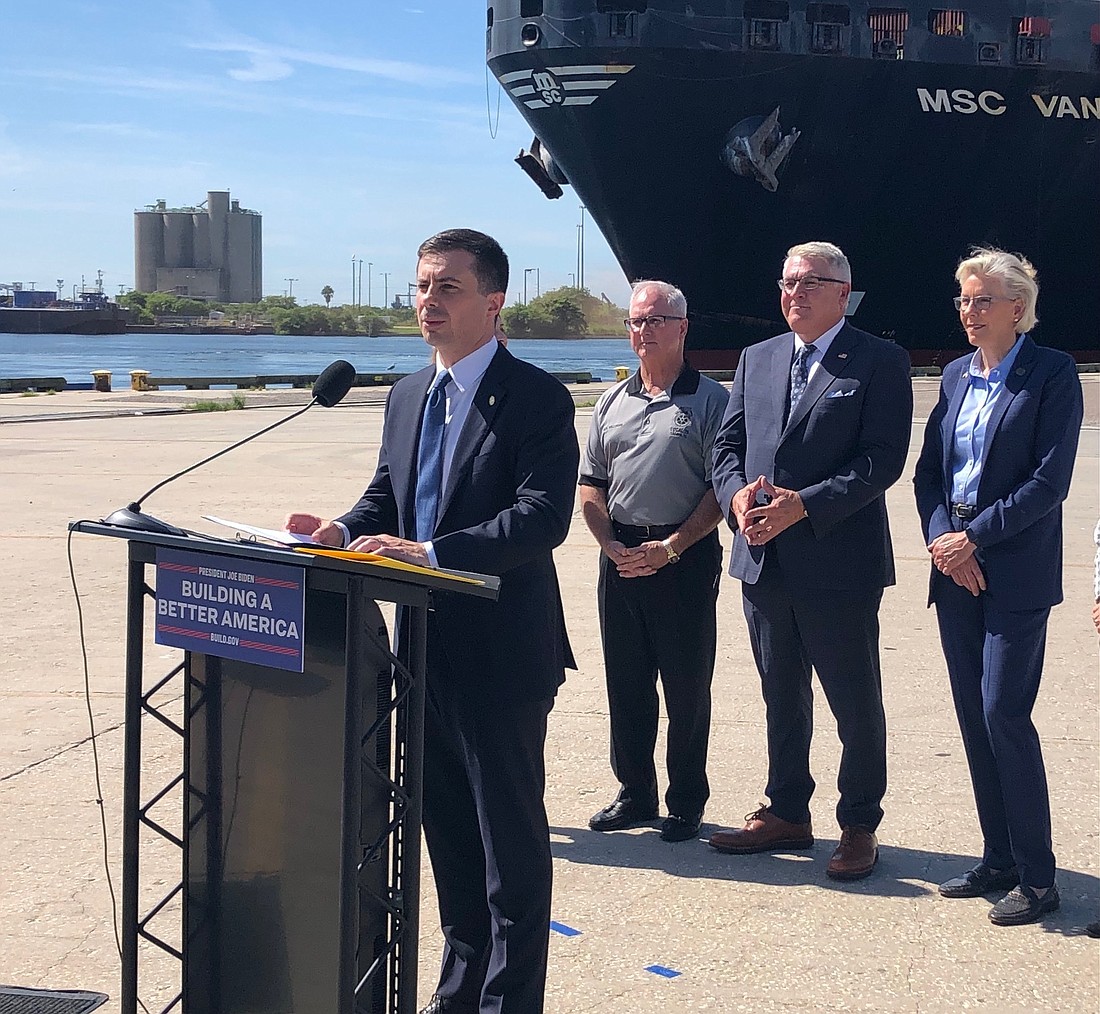- December 13, 2025
-
-
Loading

Loading

U.S. Secretary of Transportation Pete Buttigieg appeared in Tampa on Aug. 23 to announce a $12.6 million grant for the Port Tampa Bay.
The money, which comes from a RAISE Grant funded by money included in infrastructure legislation passed by Congress, will go toward the building of a new berth at Port Redwing.
According to local and federal officials, the new berth will increase capacity at the port while creating 800 jobs and reducing emissions. The new berth will connect berths 300 and 302 with a 1,025-foot dock allowing the port to service three ships at once.
This means the port will be able to process more cargo easing supply chain challenges.
Port Tampa Bay CEO Paul Anderson says the $12.6 million represents 40% of the cost to build the new berth.
Buttigieg, a front-runner for president at one point during the past election, spoke at the port as a large container ship slowly docked behind him. The ship, which officials say was making a scheduled, and fortuitously timed, arrival, made for a good backdrop for a nearly eight-minute speech on how the new infrastructure law will help ease supply chain issues and create jobs.
“When those goods move more efficiently, that is part of our fight against inflation, too,” he says as the ship moves into place over his right shoulder at, a cynic might say, just the perfect moment for the cameras to capture it. “Because efficiency and fluidity and goods movement help us keep shipping costs under control.”
Buttigieg says that over the first year, the new addition to the port will save almost 3 million miles of unnecessary travel, more than $5 million on highway infrastructure expenses and prevent 7,000 tons of emissions.
“It’s going to make a difference in the real lives of real people.”
RAISE Grants provide funds directly to public entities. The Infrastructure Investment and Jobs Act, which was signed into law by President Joe Biden, more than doubled the funding for the program this year to $2.2 billion according to the transportation department.
In addition to the money for Port Tampa Bay, five other Florida projects received grant money: $20 million to the Clearwater Transit Center for upgrades and expansions; $16 million to PortMiami to expand rail capacity and make resiliency upgrades; $24.9 million to the Florida East Coast/Brightline railway corridor for safety and technology improvements; and $12.3 million to St. Augustine for improvements to bicycle, pedestrian and electric vehicle charging infrastructure.
“When the Port Tampa Bay can accommodate larger ships or more frequent ships, you can smooth out some of (the) inefficiencies because the growth has been so fast that the infrastructure needs to keep up. That’s going to benefit people 1,000 miles away, could be in my state of Indiana,” Buttigieg says.
“This is definitely an investment in Florida and in the Tampa region. But it’s also an investment in the national economy. And that’s true of all of these award announcements that we’re making.”
Buttigieg’s visit to the port was the first of a six-city tour that’s part of the White House’s Building a Better America Tour.
This tour is designed to draw attention to, and help sell the public on, the Biden administration’s legislative successes including the Inflation Reduction Act and the infrastructure law.
That’s no easy task given the polarization in the country, when Biden’s polling numbers are low and when news reports focus so much time on the happening of a former president.
But Buttigieg, who, visiting in his official capacity, avoided politics on a day Floridians voted, says breaking through the noise is critical and that in the end people will be receptive.
“Look, I know it’s easier to get attention with a fanatical tweet or some kind of culture war controversy, but we’re going to build things. We’re here to fix things. And that’s what most Americans want,” he says.
“Sometimes it gets less attention precisely because it’s less controversial. But these are the common sense moves that the administration is focused on, making it easier, cleaner and more affordable to get people and goods where they need to be.”